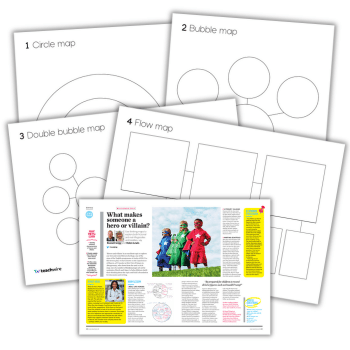6 Steps To Identifying A Developmental Need In Early Years And Providing Individual Support

Knowing that every child is different and developing your own skills ensures we continue to identify a need and have the confidence to make a difference
- by Alison Featherbe
- Independent early years trainer and consultant Visit website

We know that every child deserves the best possible start in life, and that a strong key-person relationship, having high expectations and considering the ‘voice’ of the child are foundations that provide us with information required to support all children.
But in determining a developmental need that requires additional support we need more than this. We need precise observations and accurate assessments.
So how do we do this in the Early Years Foundation Stage (EYFS) to help each unique child reach their potential?
Watch and learn
Firstly, observations of babies and children are a key part of everyday practice. They help develop practitioners’ understanding of the individual child and contribute to the assessment process as well as informing planning.
Together with information from parents, these observations will alert practitioners and SENCOs to any delays in particular areas.
It is crucial, therefore, that we continue to develop observational skills in practitioners. No two children are alike, and they ‘develop at their own rates and in their own ways’, as Development Matters in the EYFS reminds us on every page.
Progress check at age 2
This formal statutory assessment point is completed between the ages of 2 and 3, and practitioners must identify the child’s strengths as well as any areas where the child’s progress is less than expected.
It must describe the activities and strategies the provider intends to adopt to address any issues or concerns, and parents are provided with a short written summary of their child’s development in the three prime areas.
This is an ideal opportunity to address concerns and, if need be, refer and involve other professionals in the child’s learning and development.
Significant or emerging concerns should always be closely monitored and practitioners should have in place a ‘targeted support plan’ that follows the cycle of ‘plan, do, review’ as stated in the SEND Code of Practice.
This is a useful tool as it can be shared with other professionals, provides parents with ideas for home learning and ensures the key person and provision is supporting the child appropriately.
Any targets should be ‘SMART’ – Specific, Measurable, Achievable, Relevant and Time-based.
Targeted next steps
To ‘unpick’ where the gaps lie, observations should be focused on the area of need. These will then feed into planning, as practitioners provide opportunities or next steps activities that are aimed at developing skills.
Children’s interests should always be considered and planning will reflect how children are learning at the time. Small adult-led groups also offer an opportunity to develop skills, as the adult provides specific tasks to extend learning.
Measure of progress
Every provider is required to evaluate children’s progress. They must take into account levels of development from starting points for each child in their setting, and there are an increasing number of providers using online systems to make this easier.
These systems make it clear, if observations are accurate, which children require a little extra support in an area of learning.
However, the use of technology, in my opinion, should not replace the practitioner’s or SENCO’s experience and understanding of child development. Evaluating specific plans will allow you to see how breaking down ‘next steps’ supports development.
Collective interventions
So, if a delay or a ‘gap’ in an area of learning has been identified, how can we best support children and their parents?
Working together and providing a ‘holistic’ approach is necessary.
Talk to parents about the area of difficulty; is the picture you have at your setting of the child’s current capabilities similar to the one parents have at home? What about if the child attends another setting, have you exchanged information? Was there a delay that a Health Visitor identified? Have any ‘formal’ checks been done? Are there any environmental factors?
Practitioners should consider all the information about the child’s learning and development as stated in the SEND Code of Practice, as they put additional support in place.
Support structure
Practitioners need support too, and must have regular supervision. This is the opportunity for leaders or managers to discuss ‘any issues concerning children’s development or wellbeing’ (EYFS 3.22), as they will be able to guide the practitioner through modelling practice or signposting to relevant child-development articles.
Supervision is an opportunity to share strategies and approaches that develop practitioner skills with children.
Alison Featherbe is an Independent Early Years trainer and consultant with a wealth of experience in the sector. She is currently working as an associate trainer for a safeguarding charity, mentoring Early Years Initial Teacher Training students and focuses the rest of her time on the development of Orange Caterpillar which offers independent early years advice and support.
You can contact her via email at alisonfeatherbe@gmail.com or follow her on Twitter at @allyfeatherbe.







